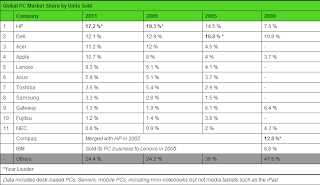For CEO's and their organizations, avoiding complexity is not an option — the choice comes in how they respond to it. Will they allow complexity to become a stifling force that slows responsiveness, overwhelms employees and customers, or threatens profits?
2010 IBM Global CEO Study
How do you respond to these statements?
For CEO's and their organizations, avoiding complexity is not an option — the choice comes in how they respond to it. Will they allow complexity to become a stifling force that slows responsiveness, overwhelms employees and customers, or threatens profits?
2010 IBM Global CEO Study
How do you respond to these statements?
CEO is the chief executive officer of a company or organization. All the official duty comes under his shoulder in an organization. CEO is mainly responsible for success and the failure of the company. From start to operating, marketing, planning, financing, recruiting, firing, rules and regulations, making friendly environment and culture everything comes under his responsibility. Usually many organizations used to have the problem of IT complexity. CEO must play a role in solving this complexity.
2010 IBM Global CEO Study
How do you respond to these statements?
CEO is the chief executive officer of a company or organization. All the official duty comes under his shoulder in an organization. CEO is mainly responsible for success and the failure of the company. From start to operating, marketing, planning, financing, recruiting, firing, rules and regulations, making friendly environment and culture everything comes under his responsibility. Usually many organizations used to have the problem of IT complexity. CEO must play a role in solving this complexity.
 |
| IT complexity and it's branches |
This week in our Fundamental and Technology class we covered the topic of IT complexity. Technical, organizational and societal are the three aspects of IT complexity.
1.1: IT complexity and its branches
On this Management IT complexity topic we did some research of HP (Hewlett Packard) company one of the leading PC manufacturer since 2000. HP is the successful company till date. After the research we find out the reasons the company for its success in the sales of its P.C
Managing complexity is becoming critically important to the success of today's businesses.
Complexity has an intrinsic value, in many cases improving profitability.Customers are happy to pay for "good" complexity."Bad" complexity needlessly increases costs and put at risk profitability
How does it become the successful company???
HP’s teams have developed a five-step process that measures the costs and benefits of complexity. Identifying the cost area impacted by product line complexity, estimate complexity and its costs per unit in each area, cutoff margin threshold for SKUs,(stock keeping units) evaluate increment margin of each proposed SKUs and eliminate proposed SKUs that do not exceed threshold.
HP developed an EXCEL-BASED ODEL showing the impacts of product line changes on each of the cost categories that had identified.
HP's desktop PC division was able to eliminate several unattractive SKUs from its product portfolio and change its processes for evaluating proposed products in the future. Armed with this information, the team had clearer guidelines on when to create new SKUs, and is now enforcing stricter minimum quantities with retail accounts. We estimated that the financial impact from this application to North America desktop PCs was on the order of $4 million per year.
HP's education vision : "Combining Human Ingenuity and Technology "
References:
http://www.orms-today.org/orms-6-05/complexity.html

No comments:
Post a Comment